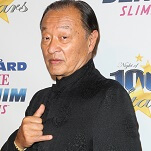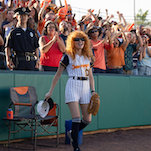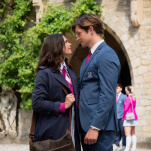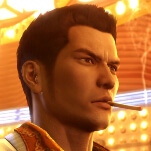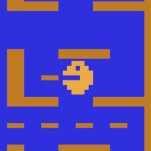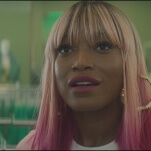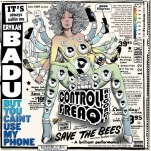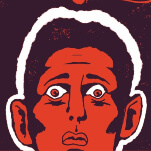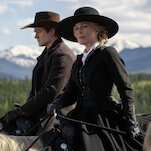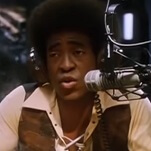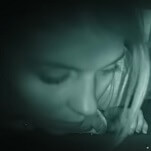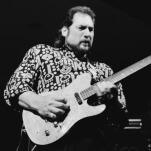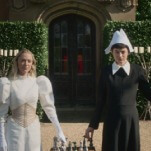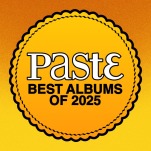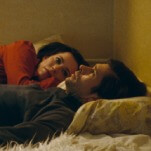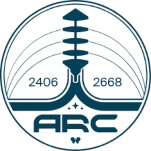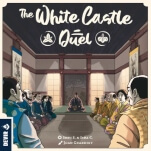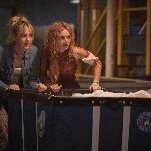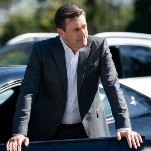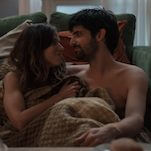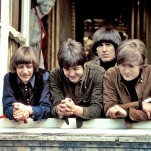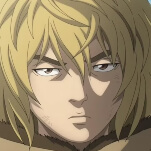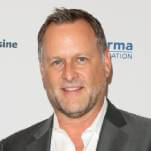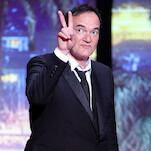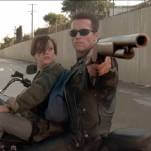Alejandro Jodorowsky’s two best-known movies, the midnight favorites El Topo (1970) and The Holy Mountain (1973), are structured as series of quests and ceremonies, in which an unnamed protagonist—a gunfighter in the former, an alchemist in latter—goes on his journey toward an enlightened state. These are ritual movies, in which physical and mental transformations are equated, hair is shorn or changes color, and possessions are buried or burned. It should come as no surprise, then, that Jodorowsky—who plays the main character in both films—is a longtime practitioner of “shamanic psychotherapy,” which posits that the subconscious is geared toward symbolism and mysticism. Proponents of the practice—many of them related to the Chilean-born director—devise rituals and ceremonies to overcome psychological trauma. As a close look at Jodorowsky’s work reveals, the line between “cult artist” and “cult leader” can be blurry.
The line only gets blurrier with The Dance Of Reality, Jodorowsky’s first movie in 23 years, and the best thing he’s done, film-wise, since The Holy Mountain. Overtly therapeutic, the movie is a 130-minute psychomagical ceremony in which the 85-year-old director comes to terms with his abusive father, Jaime (Jodorowsky’s son, Brontis). “Embrace your suffering, for, through it, you will reach me,” Jodorowsky tells his younger self (Jeremias Herskovits) at one point. “For you, I do not yet exist. For me, you don’t exist anymore.” The closing image—of Jodorowsky, standing on a tugboat alongside a skeleton, disappearing into a fog—cements the impression that this is an old man’s movie about coming to terms with life in anticipation of death. And yet, there’s nothing grim about the scene; the tugboat is painted purple, the skeleton is just a man in a store-bought costume, and Jodorowsky appears to be smiling.
Jodorowsky is an intensely charming and magnetic figure, and his playfulness and sense of humor have often rescued his work from coming across as lugubrious or pretentious. (The documentary Jodorowsky’s Dune, about his failed attempt to adapt the Frank Herbert novel, is essentially a feature-length tribute to his rascally charisma.) For all of its New Age ambition, The Holy Mountain is effectively a comedy, with the enlightenment narrative serving as connective tissue for various satirical set pieces, and even in a work as personal as The Dance Of Reality, Jodorowsky’s first impulse is to entertain. He’s a comic storyteller first and a guru second.
The Dance Of Reality is sustained by Jodorowsky’s humor, imagination, and sense of hyperbole. His buxom mother, Sara (Pamela Flores), sings every one of her lines in an operatic soprano—a joke that somehow gets funnier as the subject matter grows sadder. In a long standout stretch, Jodorowsky imagines his father attempting to assassinate Chilean leader Carlos Ibáñez Del Campo (Bastián Bodenhöfer). When Jaime lands a job at Ibáñez’s stables, his predecessor trades clothes with him and then climbs into a grave; like much of the movie, the scene is at once poignant and darkly satirical, skewering the archetype of the noble peasant whose only purpose is the happiness of his master. One sequence has a crew of firefighters getting mugged while trying to put out a fire in the slums; another finds Jaime joining an evangelical church where everything—including the sudden death of one member in the middle of a song—is interpreted as proof of God’s love. Elsewhere are roving bands of maimed miners, fistfights with Star Wars sound effects, Communist drag queens, plywood tanks, wandering wise men, dog shows judged by priests, and dog funerals conducted with full honors by the fire brigade.
Artificiality is emphasized. Though set in the 1930s, the movie makes few attempts at period detail; occasionally, Jodorowsky himself acts as a stage hand, passing key props to characters. This makes The Dance Of Reality feel like a small-town religious festival; at the same time, the viewer is always acutely aware that what they’re seeing is being enacted for the benefit of the director.
It’s the closest Jodorowsky has come to being truly poetic. He’s working in a mode which uses the grammar of narrative cinema to create a poetry of voices, gestures, and symbols—a tradition which includes Leos Carax’s recent Holy Motors. Unlike Carax, Jodorowsky is, at best, a functional visual stylist; however, his ability to transmute childhood fears and emotional pain into funny, allegorical tableaux makes for a captivating—and at times surprisingly touching—movie.



